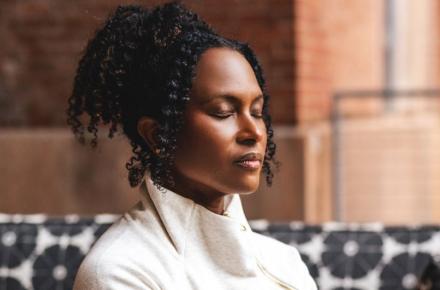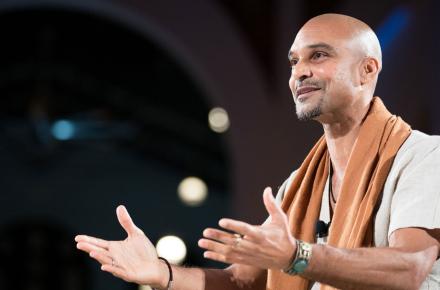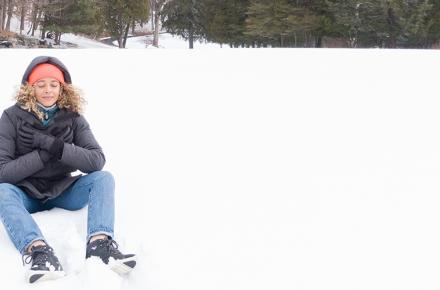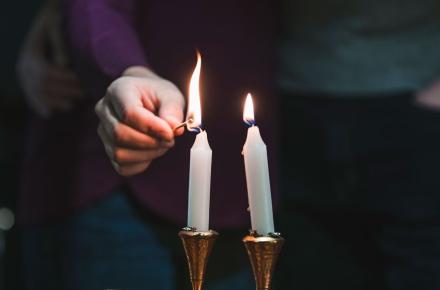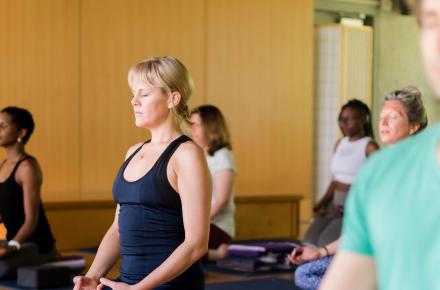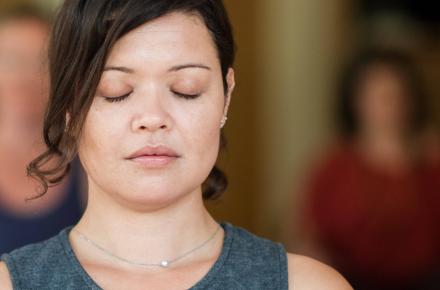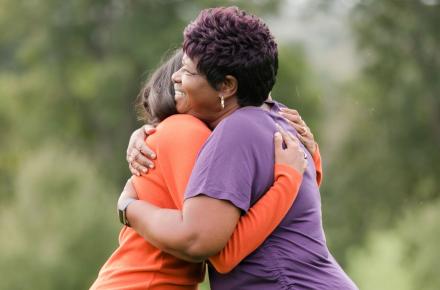The Anatomy of Natural Breath


When my 9-year-old daughter asked me what I was writing about, and I replied “breathing,” she said, in a playful tone, “I would hope it comes naturally!” And of course she’s correct. Breathing is our natural starting point for pranayama practice. So what can we add by thinking about the anatomy of breath? How can we use a deeper knowledge of the mechanics of ventilation to enhance our pranayama experience?
For starters, breathing, like all types of movement, is subject to habits that inhibit its efficiency. Those habits can begin in utero as a result of our mother’s posture, or in childhood, adolescence, or adulthood. They can be the result of injury, stress, or the myriad ways we can scrunch the torso while sitting, eating, walking, exercising, commuting, and so on. In short, the body can forget what natural is. A closer investigation of how breathing works can help us remember.
The primary breathing muscle is the thoracic diaphragm. Anatomy texts will say the diaphragm accounts for 70 to 80 percent of breathing effort, but anyone who has had the wind knocked out of them knows that, without the diaphragm, no breathing can take place. The diaphragm is indispensable—it moves up and down 15,000 to 25,000 times a day.
The diaphragm is shaped like a parachute, spanning the circumference of the lower rib cage. The sides of the chute grasp onto ribs numbers seven through 12, and reach up into a slightly flattened peak, called the central tendon. The central tendon is made up of strong connective tissue, upon which sits the heart, and descends no more than a quarter inch on the inhale. From the center of this shelf, reaching down and wrapping around the lumbar spine, are strands of connective tissue called the diaphragmatic crura. The crura separate the diaphragm into two hemispheres, right and left, which can be controlled individually.
The diaphragm’s muscular sides move in a unique way. During the first part of the inhale, the central tendon is pulled down, using the lower ribs as anchor. The majority of movement occurs in the muscle tissue that forms the sides of the diaphragm, as they shorten to pull the diaphragm down, thereby expanding the size of the lung compartment (thorax), causing air to rush into the lungs. Amazingly, during the latter part of the inhale, the anchor point switches to the central tendon, and the muscles pull the lower ribs up and out. This creates further expansion of the thorax, inviting more air in. To exhale, the muscles return to resting length and the central tendon releases upward, shrinking the thoracic space and forcing air out.
The diaphragm has extensive myofascial connections reaching down and up. Notably, the crura of the diaphragm extend into the top of the psoas muscle, and therefore the inhale is gently pulling out of the upper thighs and through the pelvis. The central tendon is continuous with the fascial connections reaching up to the heart compartment (the mediastinum), through the throat and into the mouth.
Every other muscle in the torso is an auxiliary muscle of breathing, with the intercostals and neck muscles (sternocleidalmastoid and scalenes) usually thought of as the most important of these helpers. Natural breath utilizes all of these muscles, gently pulsing them. Take time to find natural breath. It will warm up the breathing muscles and deepen your sensitivity for the pranayama practices that follow.
An Exercise for Finding Natural Breath
1. Curl your fingers under the lowest rib in the front of your torso, a few inches from the midline on either side. With eyes closed, slowly inhale. Feel the immediate expansion of the belly as the diaphragm presses down on the liver and stomach. Pay close attention and notice, as you continue inhaling, when the ribs begin to lift off your fingers. This is when the anchor point shifts from below to above.
2. Now let’s explore natural breath. Relax your hands and breathe gently through your nose. Distribute the breathing movement front to back and side to side, without forcing. The muscular wrappings of the thorax, like all muscles, need warming up, and this distribution of effort does just that. Be gentle—feel how much movement you can get throughout the torso with minimal effort. With a sensitive inward gaze, notice if one of the hemispheres feels more restricted, and invite release through cycles of breath.
3. As you inhale, move your attention down into the legs. As you exhale, invite the diaphragm to release completely, feeling a gentle press into the heart, throat, and mouth. (Often, due to stress, the diaphragm fails to release completely on the exhale.) Repeat this for several minutes, feeling the movement of the inhale from below the waist, and the movement of the exhale reaching towards the mouth. Do this ever so gently, with as little effort as possible. This is the anatomy of natural breath.
Find out about upcoming programs with Christopher Holmes at Kripalu.
© Kripalu Center for Yoga & Health. All rights reserved. To request permission to reprint, please email editor@kripalu.org.



















